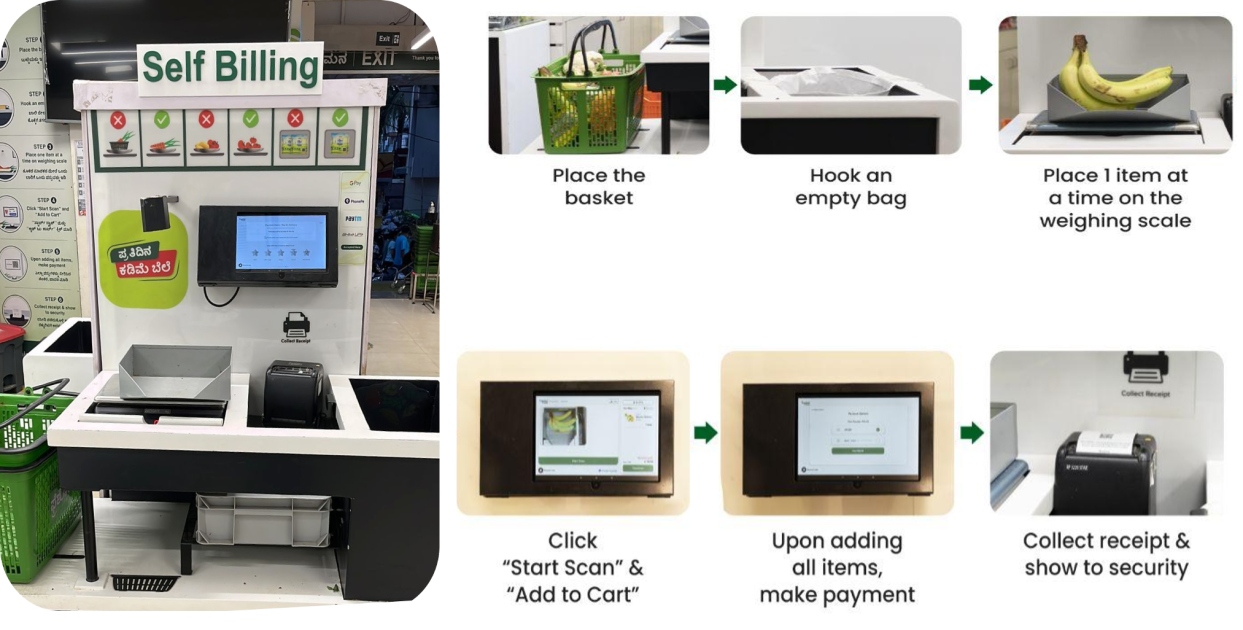In our interview today, we’re joined by Esmeralda Baños, the Head of Product at Slidesgo in Freepik Company since 2022. We’ll delve into how AI is revolutionizing educational tools under her leadership, its integration into product development at Slidesgo, and the challenges encountered. Esmeralda will offer insights into enhancing educational accessibility and engagement through AI, its impact on user experience and product design, and strategies for innovation in AI and product management. We’ll also explore Slidesgo’s initiatives in making AI features accessible to diverse users and discuss Esmeralda’s personal goals for AI in education and business.
Hi Esmeralda, considering your role as Head of Product at Slidesgo and your background in AI and design, you have a unique perspective on the intersection of technology and education. Can you elaborate on how AI is currently shaping educational tools, and what significant changes you foresee?
It’s a tricky question to start with. Generative AI arrived a year ago to change everything, and educational tools have had to understand its creative potential. Educational tools have a great ally in generative AI, and as part of the technological business, we are in a privileged position regarding it. I believe one thing that has forced us is to help teachers and students understand AI, explain how LLMs are created and trained, clarify the weaknesses and strengths of this technology, and listen to their doubts and needs. We have integrated it into products that schools and teachers trust. It’s a way of bringing these groundbreaking technologies closer. It has been a year of learning and evolution for everyone.
I’m not good at making predictions, but I believe that the upcoming changes are closely linked to the continued and stable adoption of AI in classrooms. New strategies will be created to make AI an efficient and practical assistant. Its potential as a catalyst for creativity has just begun. Every day, there are new tools that democratize creative activities, and that can have a significant impact on education. Take the example of our latest launch at Freepik: Pikaso, a real-time AI art generator tool where you create and edit AI images by simply drawing and moving things around in a sketch. It’s just amazing and extremely easy and fun to use, especially for kids. And it’s not a stopper for their imagination, on the contrary, it boosts their confidence and creativity.
In terms of accessibility and learning, the ability to iterate the same message with various adaptations will help teachers create content more quickly and have more time and energy for work in the classroom and contact with their students and their families.
How do you blend UX design and data in Slidesgo’s product development?
The Slidesgo Product Team works hand in hand with the Product Design department. We continuously discuss and test. Any solution undergoes testing with real users before moving on to development. Data is an integral part of the entire process, from analyzing the performance of specific functionality to detecting potential opportunities that we wouldn’t see without thoroughly analyzing what the data suggests. Sometimes it’s a silence, something missing, and sometimes it’s a metric that spikes, but they direct your gaze in a particular direction.
At Slidesgo, we also love conducting surveys and talking to our users. Their responses and opinions are also data, and perhaps the most relevant. We have a suggestion box and launch periodic investigations. For example, at the end of 2023, we surveyed teachers to learn more about their perception and attitude towards AI in Education, and 70% considered it beneficial for education. In the results of that research, we observed that teachers tend to use AI tools that are integrated into other solutions they use on a daily basis. All this information, shared and discussed with the Product Design department, helps us develop new solutions and improve existing ones. This insight leads us to establish a requirement that any new functionality be integrable and compatible with programs and technological solutions used by teachers.
What AI features does Slidesgo use and plan to include in future updates?
We are working on expanding our AI Presentation Maker, which has been a major success throughout 2023, to cater to specific needs and use cases, especially those occurring within a classroom. Referring back to the results of our survey on the use of AI among teachers, when we asked how they use generative AI, 55% use it to organize their classes, 46% as inspiration for their presentations, and 37% to summarize texts and documents. It is the users themselves who guide us on the path of what needs to come.
Source: AI in Education survey by Slidesgo
We are preparing many things for the new year, and all of them aim to reduce friction in the daily actions that teachers have to take to organize their classes, but I can’t reveal much more. Only then is it going to be exciting, and with the Slidesgo brand: easy to use, practical, and with great design.
What challenges have you faced using AI in educational tools and how were they solved?
The challenge has been to create something simple and intuitive to use while also being useful for our users. In our survey on the use of AI among teachers, what we observed is that teachers mostly use AI tools to generate educational content and personalize teaching. We have focused on this aspect to create a straightforward experience that supports and accompanies teachers and students in the presentation creation process. Empowering users, especially teachers, so they feel that we are helping them improve the quality of their work
How does your background in social anthropology influence your approach to AI ethics in education?
Knowing Social Anthropology allows you to adopt a critical and distanced perspective while empathizing and gaining a deeper understanding of user issues. This critical perspective makes it easier, for example, to always place values such as respect for diversity, care for privacy and security, and the certainty that AI is a support tool that needs to be useful and valuable for educational professionals at the center of projects. However, it’s essential to be aware of certain limitations that AI currently has.
How can AI improve educational accessibility and engagement?
In many ways. Teachers are particularly creative and motivated professionals. Speaking with one of our Slidesclass collaborators, who is an art teacher for children aged 4 to 6, he shared how he introduced AI into his class by having the children dictate a prompt that he then input into MidJourney while the kids drew with their crayons and paper. At the end of the class, each child showcases their results, comparing them with what the AI generated. It’s a creative, fun, and safe use of AI in the classroom.
Regarding accessibility and diversity, AI allows the adaptation of text to different reading levels quickly, personalizing a lesson so that students’ names become part of the class itself, engaging them more. By enabling faster content generation, it facilitates teachers in continuously updating their work material, taking into account trends and current events. Moreover, this is something that teachers themselves value. 52% of the teachers we surveyed believe that generative AI can be used to improve interaction with students and personalize their learning.
What AI and business trends do you predict and how should businesses adapt?
GPTs have just begun, and they are currently the most popular rising trend. These solutions address practical and everyday problems, and it makes sense that this is one of the directions in which generative AI is evolving—integrating it seamlessly but consistently into our daily lives. Brilliant solutions are emerging for small everyday challenges. As I mentioned earlier, I’m not good at predicting the future, but I believe we are moving towards the possibility of increasingly personalized and ad-hoc functionalities that are based on the current more general models. Each of us has “our own Chat GPT,” so to speak.
Companies not only need to adapt; they should already be adapted. I can’t recall who said it, but navigating AI is like swimming in a river. If you don’t want to drown, you have to move a little faster than the water. If you go too slowly, the current will drag you away, and if you go too fast, you’ll lose control. Just a little faster than the water, that’s the pace.
How will UX evolve in AI-driven product environments?
I believe that UX (User Experience) and especially UI (User Interface) disciplines are already quite mature, and the main challenge lies in applying technology to various cases and usage scenarios. The evolution toward conversational interfaces, based on dialog formats, seems to be the next step. Another question is how AI can assist UX professionals in their work, but that is a different conversation.
Can you discuss a Slidesgo project that transformed educational presentations?
Our motto is that we help create great presentations faster. With our AI Presentation Maker, we’ve achieved the ability to create a presentation on any topic in a matter of minutes, which the teacher can easily edit through our online editor. Additionally, they can integrate content from Freepik and Flaticon related to the subject of their presentation. The percentage of teachers who only need 30 minutes to generate a presentation increases from 37% to 56% thanks to tools like our AI Presentation Maker. The extra time they gain is time they can dedicate to training, spending more time with their students, or exploring strategies to innovate in the classrooms. The impact is not only direct in terms of time but also has indirect benefits.
How does Slidesgo make AI features accessible to diverse users?
All Slidesgo presentations are designed to be 100% accessible, and we take into account potential learning disorders present in classrooms. We also strive to ensure that our content reflects diversity and is adaptable to any environment. Schools from many different countries use Slidesgo templates, and we want everyone to find the perfect template for their class. One of our goals is to make the content accessible ‘by design,’ meaning that teachers and students using our products don’t have to worry about whether the colors, font sizes or transitions of the presentations are suitable for everyone in the class because, by default, they are created with accessibility criteria.
These same principles apply to our product design. We test each new solution with real users before launching them and ensure they meet accessibility criteria to guarantee that everyone can use them. It’s simply part of our internal workflow. Aspects such as color contrast in the interface, clear and understandable texts, font sizes, and layout to assist screen readers are all monitored. It’s not an extra effort; it’s ingrained in our process.
What are your top book recommendations in AI, design, and product management?
In product development, the classic trio of “The Inmates Are Running the Asylum” by Alan Campbell, “Inspired” and “Empowered” by Marty Cagan, remains as relevant as ever. One of my go-to books is “Why We Fail” by Victor Lombardi, which underscores the importance of testing, researching, and staying highly attentive to user needs and market trends. I also recommend “AI and UX: Why Artificial Intelligence Needs User Experience” by Gavin Lew. It provides a fascinating approach to the history of AI and how UX and Product Thinking can shape it for useful purposes. I’ve just started “Human-Centered AI” by Ben Shneiderman, but I’ve only read a few dozen pages and can’t delve much deeper. However, I’m enjoying what I’ve read so far
What strategies should product managers use to innovate in AI and Product Management?
The first and most important thing is not to be afraid of AI and to use it. A good product manager needs to be familiar with the technologies around them and see them as tools to solve problems, not as ends in themselves. When faced with the challenge of solving a problem for our users, as product managers, we must understand the potential and applications of the various technologies available, and AI is one of them, particularly powerful and versatile.
So, on a purely strategic level, you should consider and include AI in your toolbox. It helps you think beyond, out of the box, and removes limitations. I would advise product managers to start working with AI in their definition and exploration processes. They should read extensively about how it works at a purely technical level, integrate it into their daily routines, and experiment with it.
What are your personal goals for AI in education and business?
2024 will be the year in which AI takes center stage in all developments and products, integrating it as another tool. We aim to innovate through useful and practical solutions, and generative AI will be a central element around which we continue building products for our users. Facilitating access and providing a safe and straightforward AI experience, acting as advocates, and assisting our community of teachers to promote the use of AI in schools are some of the goals for 2024.



